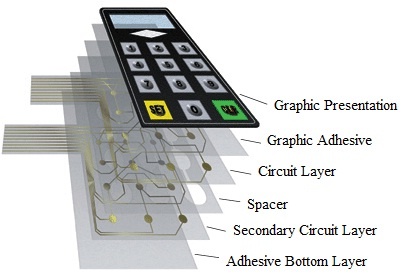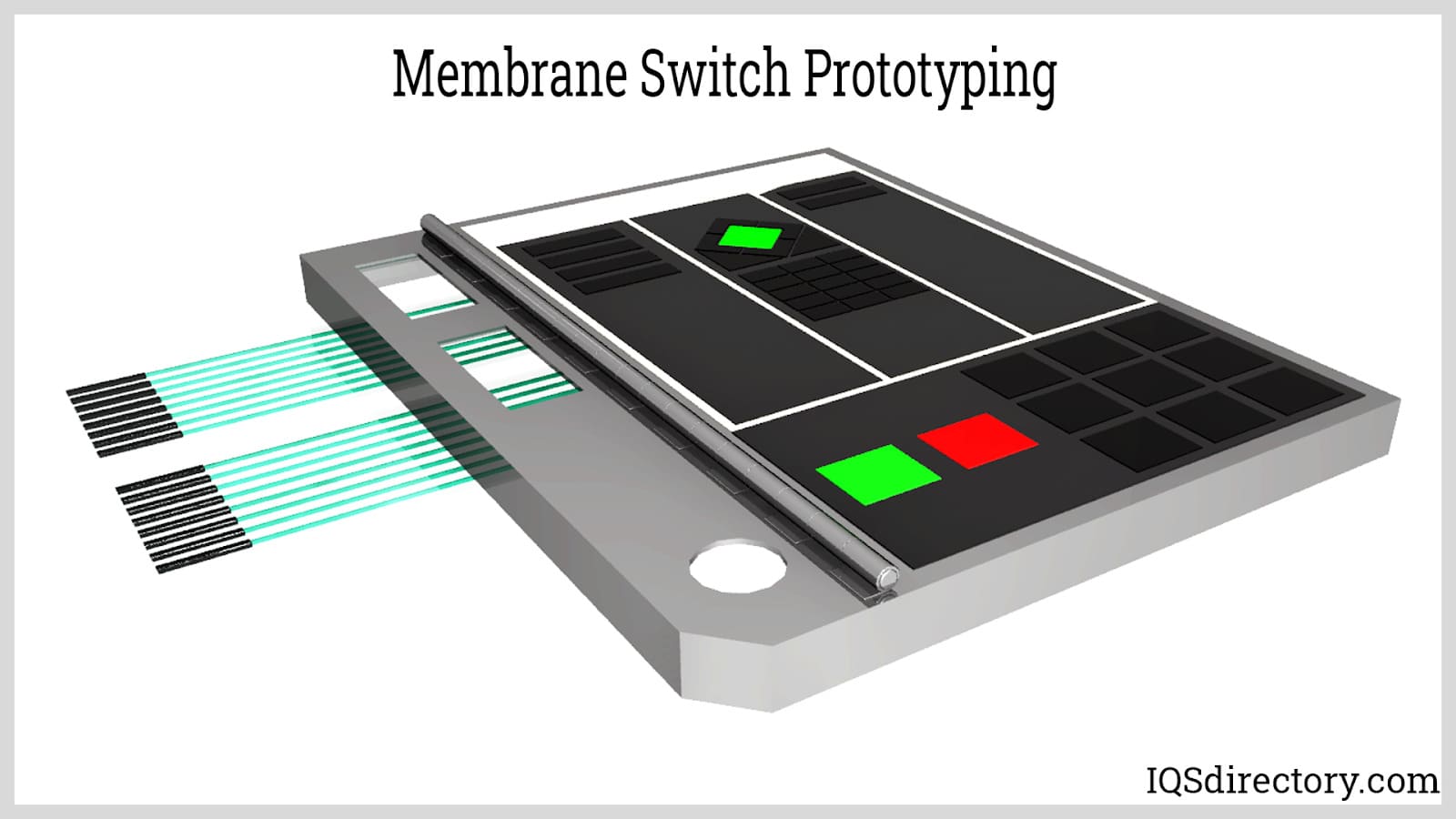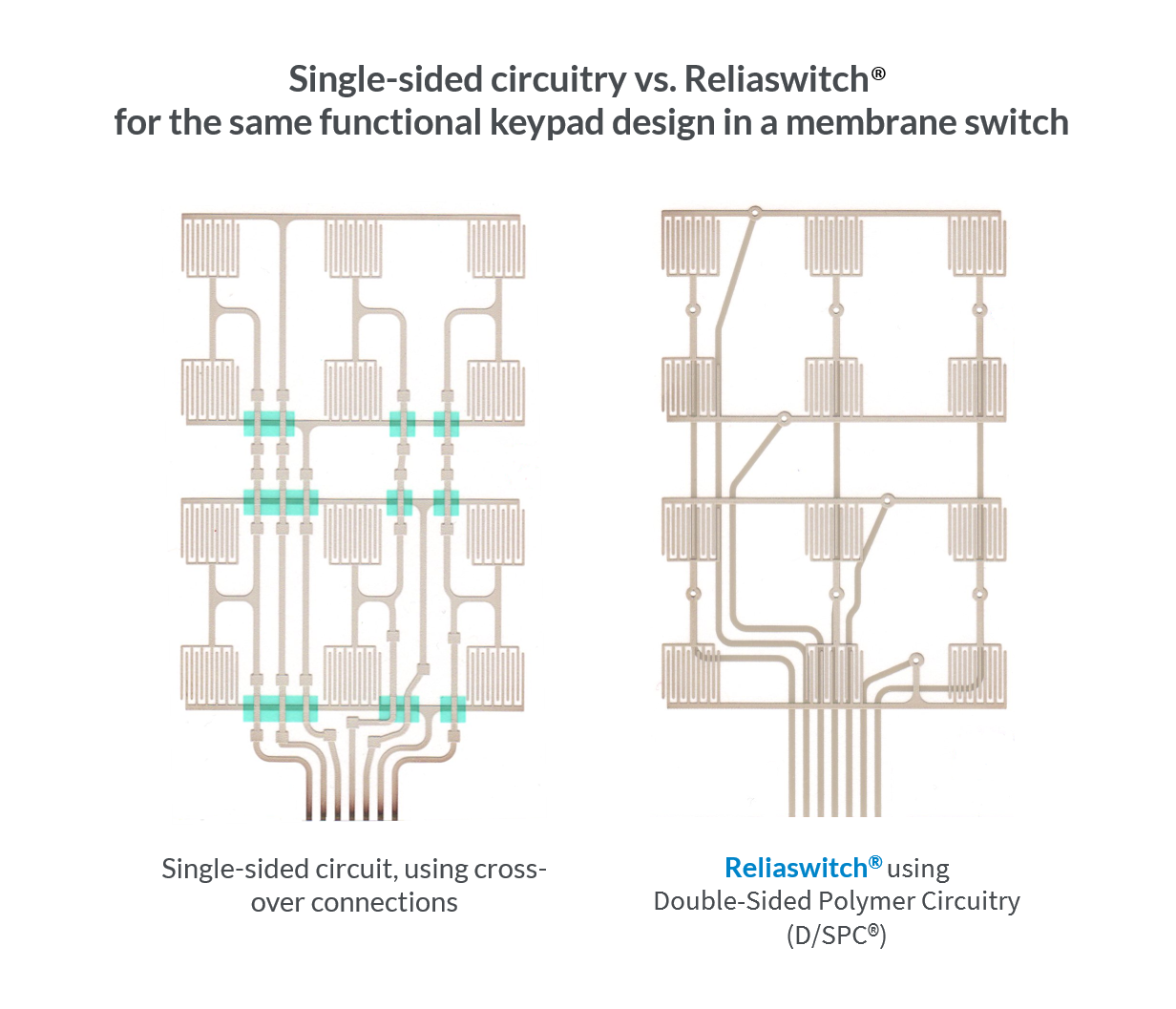The Manufacturing Refine Behind Membrane Change: What You Need to Know
The production process behind membrane layer switches combines cautious design, product option, and quality assurance. It begins with comprehending the intricacies of membrane layer button style and proceeds through numerous phases, including product choices and printing methods. Each stage plays a necessary role in making sure functionality and sturdiness. However, the complexities of layer building and construction and the rigorous testing criteria might reveal understandings that are not quickly obvious. What lies beyond these fundamental components?
Recognizing Membrane Switch Style
Although membrane layer buttons might appear simple initially glimpse, their layout entails intricate considerations that guarantee performance and toughness. The style procedure starts with a complete understanding of customer needs, consisting of the user interface's designated application and ecological aspects. Functional designs is a crucial aspect, as the design should help with simplicity of use while ensuring that tactile responses fulfills customer expectations.Moreover, the layering of parts, such as graphic overlays, glue layers, and conductive traces, must be specifically crafted. membrane switch. This split configuration not only influences the switch's responsiveness but also influences its long life. Interest is provided to the sealing strategies used to secure against dampness and dirt, which might compromise efficiency. Furthermore, design factors to consider encompass appearances, where color design and aesthetic clearness enhance customer experience. Eventually, the design of membrane layer changes equilibriums performance, user experience, and durability, making certain that they satisfy the needs of different applications efficiently
Products Used in Membrane Layer Change Production
When choosing products for membrane button manufacturing, it is vital to consider both efficiency and sturdiness. The primary materials consist of polyester and polycarbonate films, which give flexibility and toughness. These films are commonly coated with sticky to guarantee appropriate bonding to substratums. Conductive inks, generally made up of silver or carbon, are crucial for producing electric connections within the button, enabling reputable operation.Additionally, a safety layer, such as a hard coat, is regularly related to improve scrape resistance and longevity. The choice of backing product, such as acrylic or foam, can substantially impact the button's tactile feel and general customer experience. Furthermore, different ecological elements, consisting of temperature level and moisture, should assist product option to guarantee peak performance in certain applications. Eventually, the appropriate mix of materials adds to the membrane layer button's capability and life-span, making educated selections crucial for makers.
The Printing Refine: Creating Video and Text
The printing process in membrane button manufacturing plays a substantial duty in creating top notch graphics and text. Numerous graphic layout methods are utilized to assure aesthetic charm and capability, while careful ink option techniques are crucial for longevity and performance. Comprehending these elements is fundamental for accomplishing best outcomes in membrane button layout.
Graphic Design Techniques
Graphic design strategies play an essential role in the printing procedure of membrane switches, as they define exactly how graphics and message will inevitably appear on the end product. Efficient graphic layout includes the strategic use typefaces, colors, and formats to improve readability and visual allure. Developers frequently use vector graphics for scalability, ensuring that pictures remain sharp at different dimensions. In addition, focus to comparison and placement is important, as it influences individual communication and aesthetic quality. The unification of branding components, such as logos, should be managed with like preserve brand name stability. Generally, thoughtful visuals style methods contribute considerably to the functionality and good looks of membrane layer buttons, affecting customer experience and item efficiency.
Ink Option Approaches
Selecting the ideal ink is necessary for attaining the preferred visual quality and longevity in membrane button manufacturing. Various ink kinds are utilized, consisting of solvent-based, water-based, and UV-curable inks. Each type uses distinctive qualities, such as versatility, adhesion, and resistance to ecological aspects. Solvent-based inks are often preferred for their toughness and vivid colors, while water-based inks are much more ecologically friendly however may have restrictions in attachment. UV-curable inks provide fast healing and durable efficiency. Additionally, shade matching strategies guarantee that the selected inks align with design requirements. Eventually, the choice of ink must take into consideration variables such as application method, substratum compatibility, and end-use demands to achieve exceptional outcomes in membrane switch graphics and message.
Layer Construction and Assembly

Product Choice Refine
A careful selection of materials is important in the production process of membrane switches, as it directly influences capability and longevity. The primary materials used consist of polyester, polycarbonate, and different conductive inks. Polyester is often preferred for its superb resistance to chemicals and abrasion, making it you can check here suitable for severe atmospheres. Polycarbonate, on the various other hand, offers remarkable clearness and effect resistance, which is valuable for applications calling for visibility and toughness. Conductive inks, commonly made up of silver or carbon, are crucial for developing trusted electrical paths. Additionally, the choice of sticky materials influences the overall integrity of the button - membrane switch. Assessing elements such as ecological direct exposure, tactile responses, and visual demands guides suppliers in picking the finest products for their certain applications
Layer Attachment Strategies
Adhering layers in membrane switch building and construction is a crucial procedure that ensures performance and durability. Different adhesion methods are used to secure perfect bonding in between layers, which usually include the use of adhesives, warmth, and stress. Pressure-sensitive adhesives (PSAs) are frequently used for their convenience of application and instant bonding abilities. Additionally, thermal bonding techniques can be used, where heat is utilized to activate adhesive homes, protecting a solid bond. The selection of adhesion approach largely depends on the materials entailed and the certain application needs of the membrane switch. Proper placement and uniform application of adhesives are essential to prevent issues, safeguarding the button operates effectively throughout its desired lifespan.
High Quality Control Procedures
Assuring quality control throughout the layer construction and assembly of membrane layer switches is crucial for preserving efficiency and integrity. This process normally includes a number of vital procedures, consisting of comprehensive inspections at each stage of manufacturing. Suppliers use advanced testing techniques, such as peel examinations and adhesion evaluations, to verify the stability of layer bonds. Furthermore, visual inspections are conducted to recognize any type of issues in printing or material disparities. Ecological conditions, such as temperature level and moisture, are very carefully kept an eye on to guarantee ideal curing and adhesion. Additionally, regular calibration of devices helps preserve precise production criteria. By applying these quality assurance steps, makers can substantially minimize the threat of product failure, assuring that the final membrane changes fulfill the needed specifications and client assumptions.
Examining and Quality Assurance Steps

Advancements in Membrane Layer Switch Over Innovation
As improvements in technology proceed to advance, membrane buttons are taking advantage of cutting-edge advancements that boost their performance and user experience. One remarkable advancement is the integration of capacitive touch technology, which enables more responsive and instinctive interface. This shift not just improves visual appeals yet also reduces mechanical deterioration, extending the life-span of the switches.Additionally, view developments in visuals overlay products have caused boosted longevity and resistance to ecological variables such as dampness and UV light. These materials now offer improved clarity and brightness, additional boosting the visual appeal.Furthermore, the consolidation of smart modern technology is transforming membrane layer switches over right into interactive control board, enabling connectivity with IoT devices. This connectivity fosters a smooth customer experience, leading the way for applications in numerous markets, from medical care to consumer electronic devices. Jointly, these technologies position membrane changes as crucial parts in modern gadget design.
Often Asked Concerns
For how long Does the Membrane Layer Switch Over Production Refine Take?
The period of the membrane button production procedure can vary substantially. Factors such as complexity, products made use of, and manufacturing quantity impact timelines, with normal production ranging from a few days to a number of weeks for conclusion.
What Are the Usual Applications for Membrane Buttons?
Membrane buttons are typically made use of in numerous industries, consisting of automobile controls, household appliances, clinical devices, and customer electronic devices (membrane switch). Their flexibility and resilience make them suitable for applications requiring straightforward interfaces and reputable performance in varied atmospheres
Can Membrane Layer Changes Be Personalized for Specific Needs?

What Is the Lifespan of a Regular Membrane Layer Switch Over?
The life expectancy of a normal membrane layer button differs, but usually, it varies from 1 to 5 million cycles. Variables such as use, setting, and material high quality greatly affect durability and overall performance in time.

Are Membrane Layer Switches Over Ecologically Pleasant?
The ecological friendliness of membrane changes differs. Some materials utilized might not be recyclable, while others can be environment-friendly. The general effect relies on producing materials and methods, demanding mindful consideration throughout choice and disposal. The production procedure behind membrane layer switches combines careful layout, material choice, and top quality control. It starts with comprehending the details of membrane switch design and advances with numerous stages, including product options and printing methods. When selecting products for membrane layer button manufacturing, it is essential to contemplate both efficiency and resilience. A cautious option of materials is essential in the manufacturing procedure of membrane switches, as it straight affects functionality and durability. The selection of attachment approach greatly depends on the products involved and the certain application needs of the membrane switch.